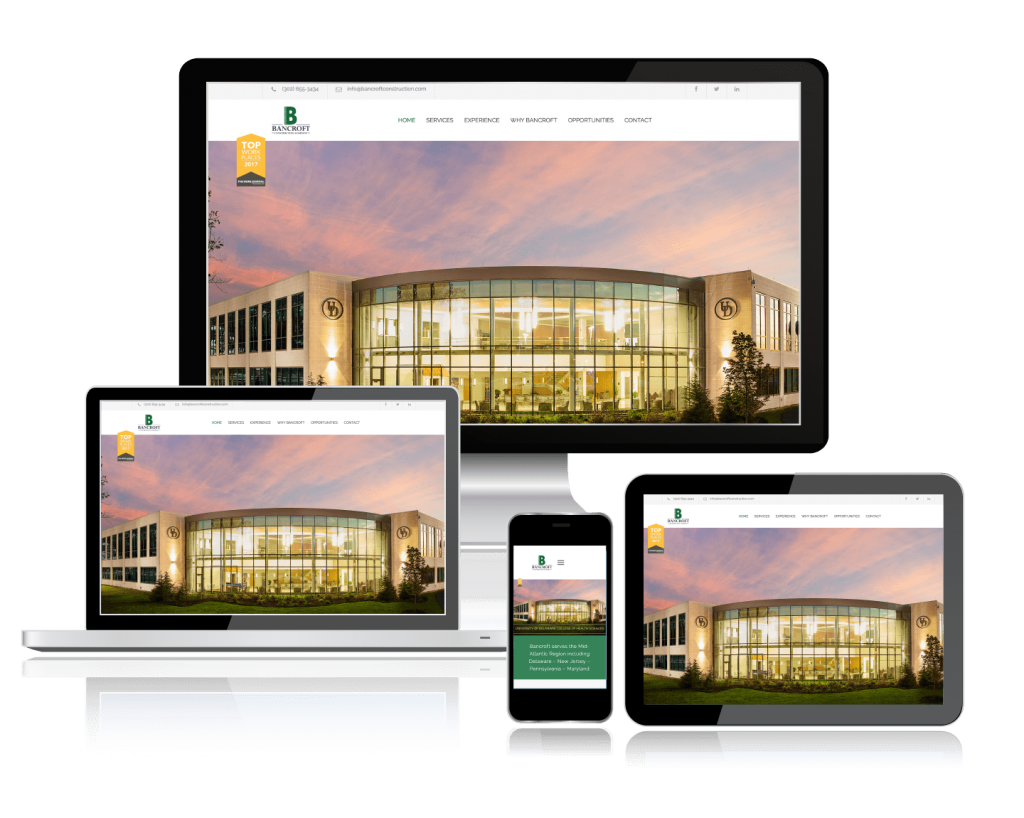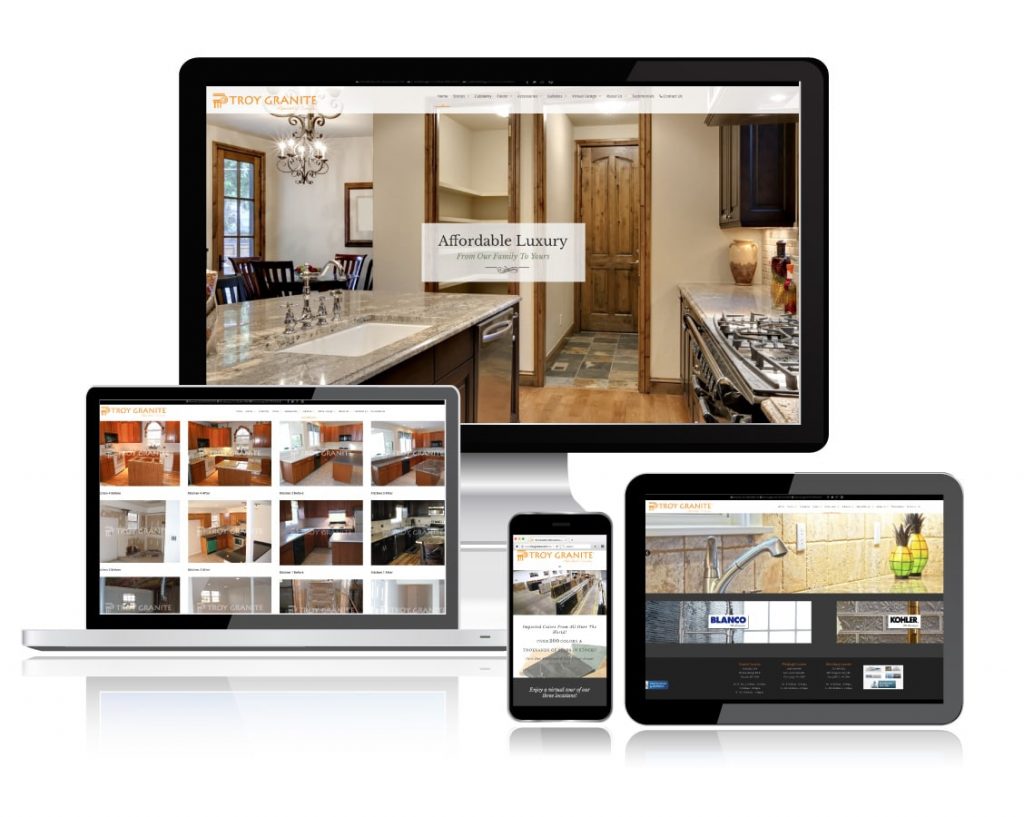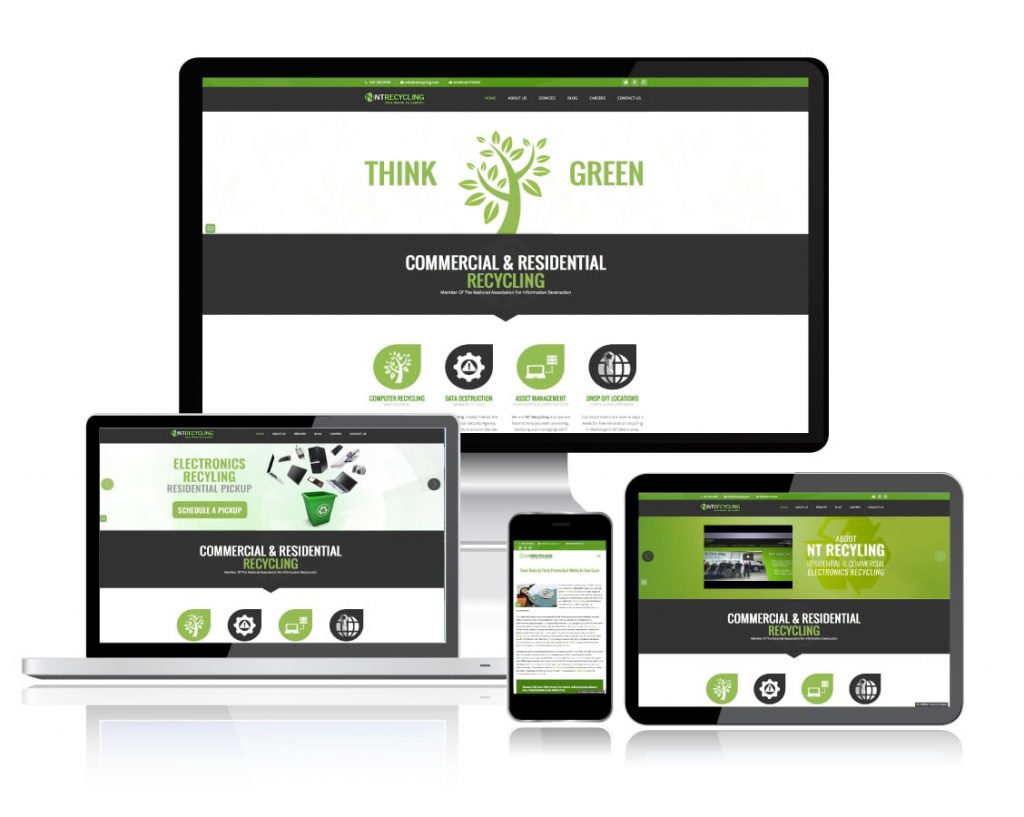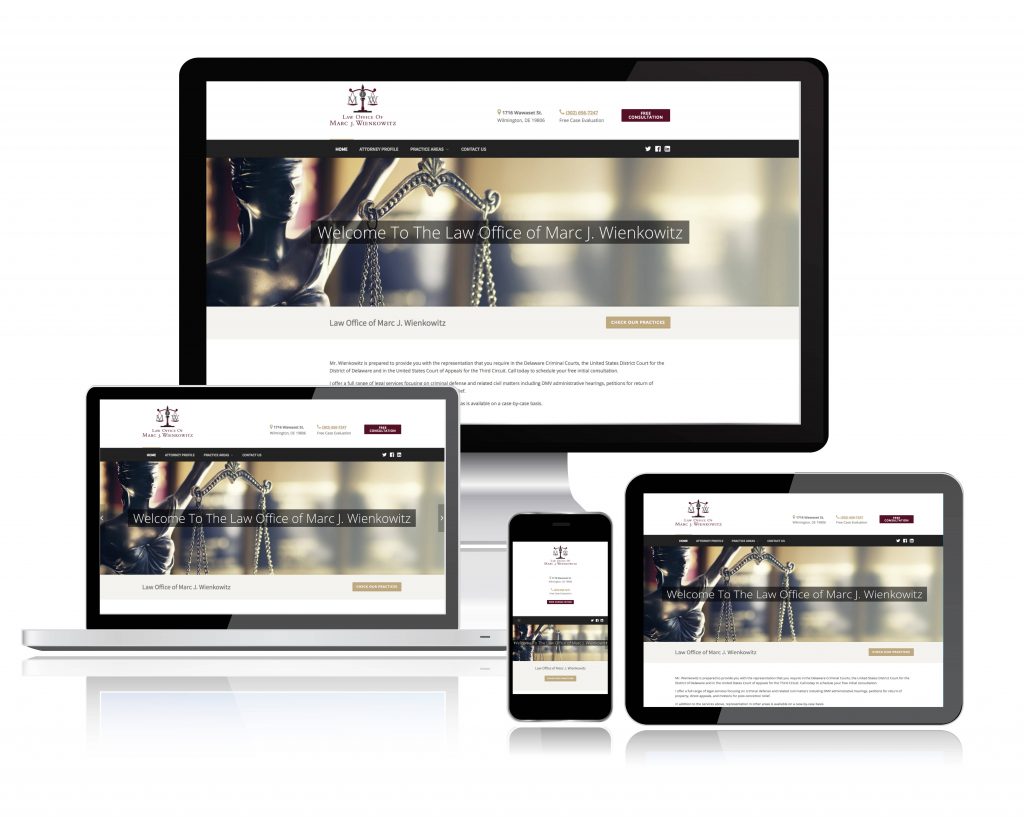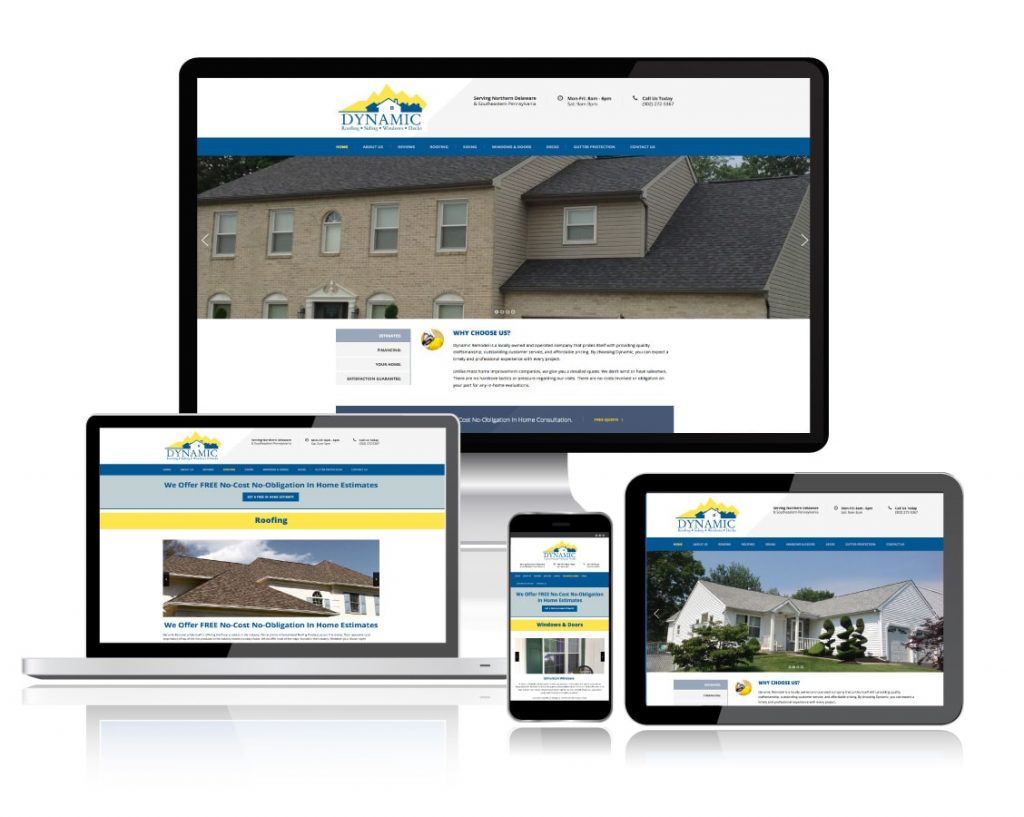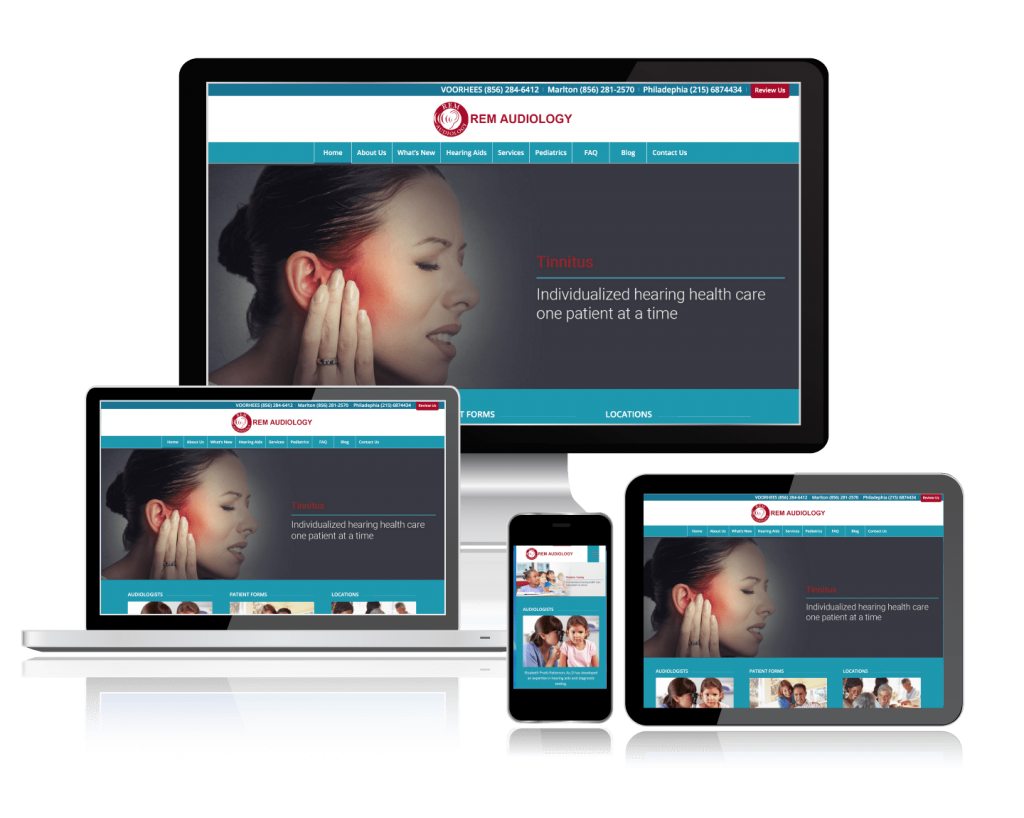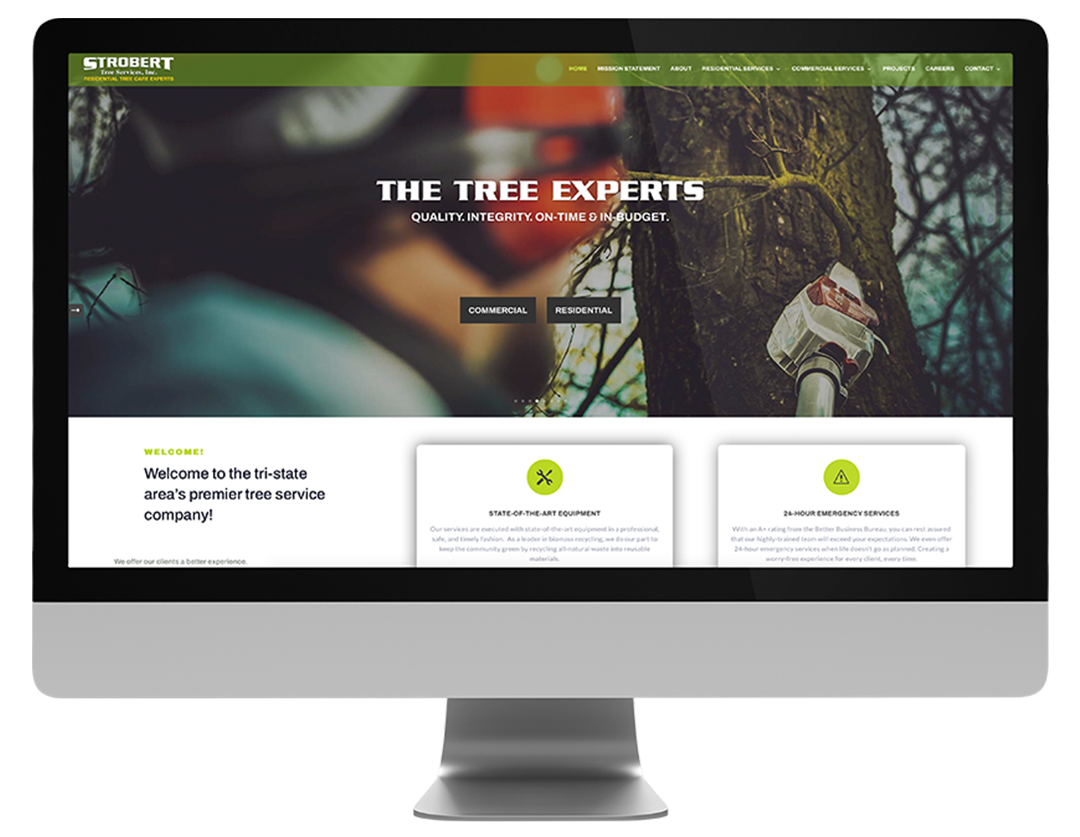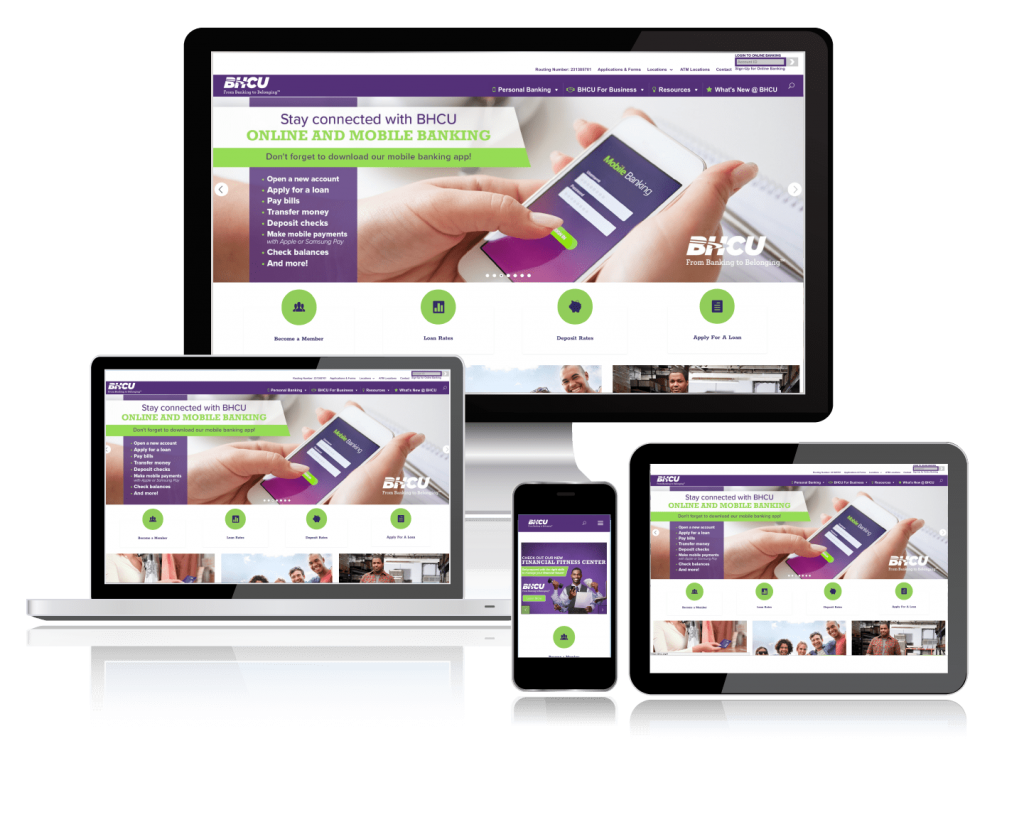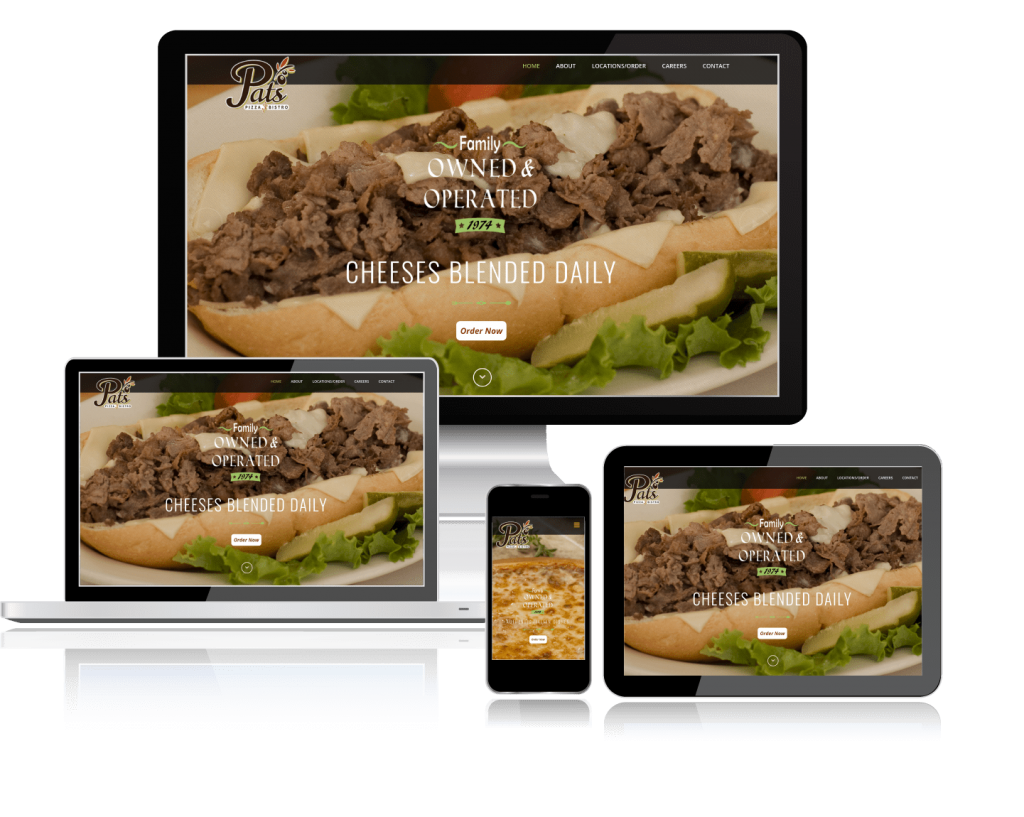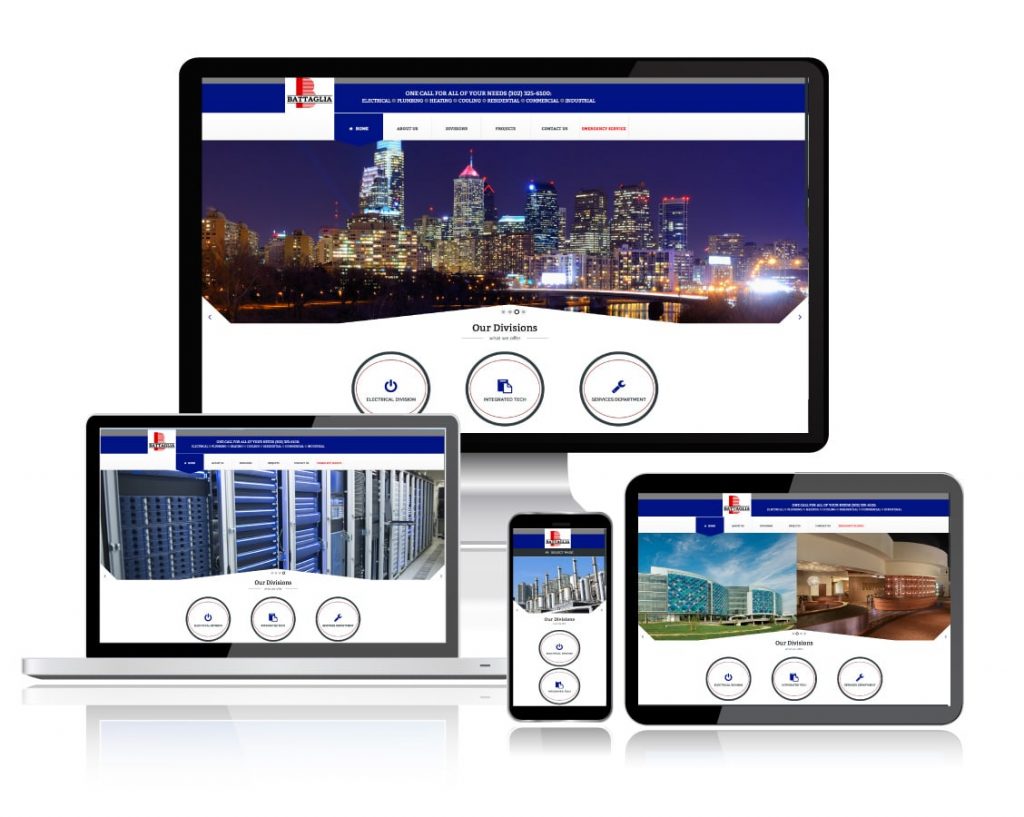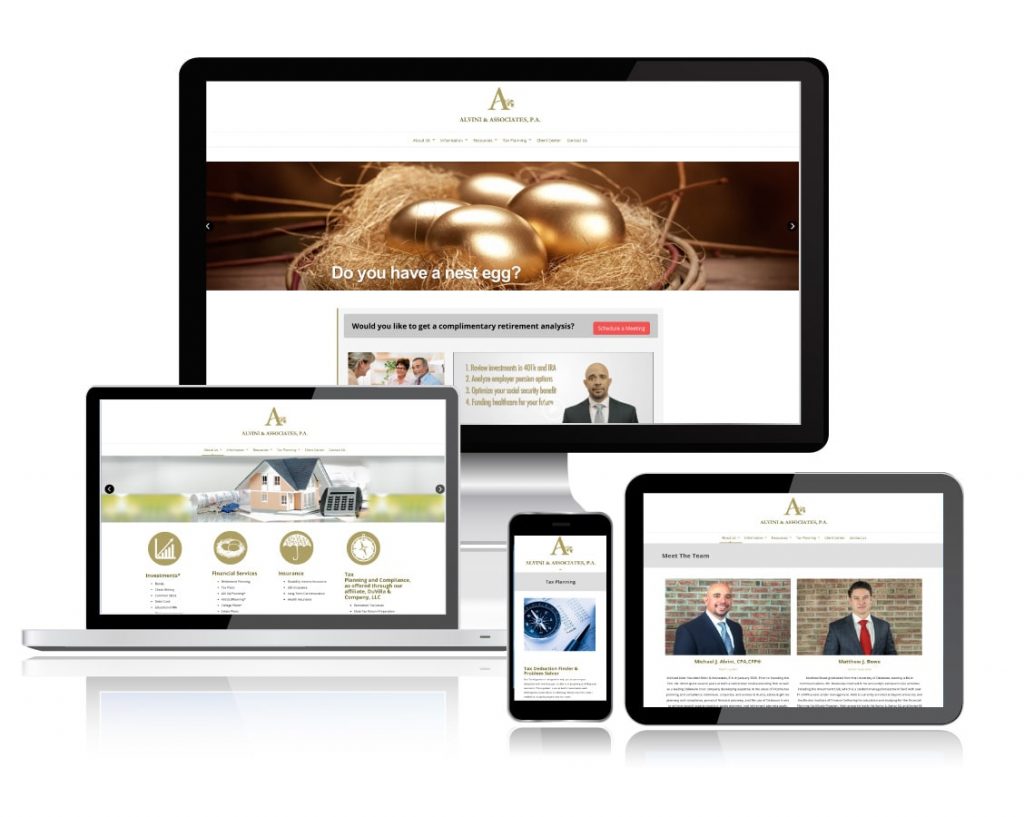Responsive and Modern
Delaware Website Design Company


We are Delaware’s #1 Website developers.
We build 100’s of websites for plumbers, HVACs, Electric companies, Hearing aid companies, financial institutes, and more.
First impressions are everything.
Let us help you create a dynamic new website or update your current website.
Using the best-in-class technology, we build websites with a full team of developers working on cutting-edge solutions, we customize interactive development for every client need.
From start to finish, we will work with you to reach your design goals, answering every question along the way to ensure you can utilize your website as the effective marketing tool that you need and deserve. Your website will be unmistakably yours, a true reflection of your business.
Our goals in website design are plain and simple, we want your website at the top of the search engines, and we want many viewers to visit your site and come back.
The technological language that allows this to happen is responsive design, user experience, interactivity, and encouragement for links. These are the critical components that make a website successful. We are here to create the best Website design that will help your business grow. Below is an in-depth look at each of the development components, and their function on your website.
We want to ensure that your users enjoy their experience and want to rate you highly. This comes from precise information and ease of use. No one rates a complicated website highly. We work to make your website easy for your user to get what they need and enjoy their experience in the process. We want your users to give you their email, credit card, or agree to what you are offering. We design to meet your user’s needs in a positive way.
We will create your user experience to directly be connected to your business and all it has to offer. Videos, questioners, sign-ups, or if you need a shopping cart, we will make sure your users have everything they need to get what they want in an easy-to-use way.
9 reasons why “Free” Website Is a Bad Idea
The insane increase of internet technology and online users has spurred a large market for Do-It-Yourself and free website design building companies. They target small businesses and lure them in with the idea of getting a functional website at no cost. People unfamiliar with the benefits and intricacies of professional website design services may be tempted to go down this route to save costs for their business, but there is usually a much greater cost for not going with a real agency for your web design needs. Here are the most important reasons why getting a “Free” website is usually a pretty bad idea:
1-No Control over Coding or Hosting/ Limitations on Design & Functionality
Free online website design offered by companies such as Wix, GoDaddy or Web.com has a set of standard website templates and gives you some control over the front-end design, but no access to the back-end coding of the websites. This puts extreme limitations on how truly amazing and functional your website could be. Back-end coding allows for unlimited customization, high-tech integrations with other important software, and advanced functionality that may be beneficial to your business.
2-Advertisements and Unprofessional URLs
In order for a service to be “free”, they have to make money somehow. The way most of these companies earn a profit is from hosting irrelevant and unsightly advertisements somewhere on your website. This is distracting and frankly annoying to a lot of users. Free website design also usually has the service’s name and tagline posted at the bottom of your website that can’t be removed. This straight-up tells users that you skimped on investing in a good website. Additionally, the free websites force you to use an extension of their company’s domain and not a custom domain that you own and is exclusively yours (for example yourcompany.theircompany.com).
3-Your Website Isn’t Really Yours
Probably one of the worst aspects of choosing a free website design for your business is that these sites cannot be exported and handed over to you in the case that you end up wanting to move to a better hosting company or a professional web developer in the future. You are ultimately “stuck” with this company forever – or else you lose your website and have to start over if you change your mind down the road.
4-Limited Bandwidth, Storage, and Memory
Companies offering free websites, don’t have the resources to offer their clientele decent amounts of bandwidth, storage space, and memory which can be crucial to the speed, availability, and front-end experience of a website. You’ll be limited to how many pages your website has, how much media can be included on the site, and even how many visitors are able to access your site in a given amount of time.
5-Low Credibility with Your Visitors
The use of advertisements, the free service branded on your site, lack of design uniqueness, and a bad URL all contribute to a lack of trust and confidence in your potential customers that visit your site. It decreases your professional credibility and could have a negative effect on website traffic. This can nullify the whole purpose of an effective website – to gain leads and enhance revenue for your business.
6-Lack of Customer Service and Support
Truth be told, if you aren’t paying these companies anything, they aren’t going to have you on the top of their priority list when it comes to technical support or customer service. Many free companies say they offer support, but when you actually need it, very often you’ll just be directed to a less-than-helpful Q&A forum which usually never fixes your issue and then asks “Did you find what you were looking for? :)” The answer is pretty much always no.
7-Your Information Could Be Shared and Targeted
Don’t be surprised if after signing up for a free website design, you end up being bombarded with marketing emails – related to online tools, other free website services, etc. These free companies are known to share and sell your information as another avenue of generating revenue.
8-Weak Security
Even if some of these companies claim to offer you a Free SSL Certificate* with your website, don’t be fooled. Not all SSL certificates are created equally and don’t offer the same protection to you and your visitors. Typically, you will be getting the lowest level of security available. It’s not unusual for these free website companies to be targeted by malware, too.
9-Ultimately, Free Isn’t Always Really Free
Once people get started with the free website services, they usually run into issues and situations that bring attention to additional needs: whether for their business or their website’s appearance and operation. In order to gain access to these solutions (if they are even available), they’ll charge you for each and every one of these “extras” (like removing the tagline that says “This website was made for free on ________”) and you’ll still probably not get the full scope of what you want in your overall website experience. The saying “You get what you pay for” always rings true when it comes to web design and development.
Web Design: Expectations vs. Reality
We are all aware at this point that websites dominate the digital marketing world. Basically, every reputable or successful business has a functional website. They are necessary and beneficial for a multitude of reasons and the masses are now more familiar with this than ever before. However, when it comes to truly understanding and appreciating the topic of website design and development, there are many popular misconceptions. Here’s a quick dose of reality in response to some of the most common misjudgments:
Web Design isn’t easy. You shouldn’t let unprofessional design your business website.
Design skills and creativity are specialized talents that require a deep understanding of design principles, best practices, and technical knowledge. You wouldn’t hire a receptionist at your doctor’s office to perform your surgery, so don’t recruit your next-door neighbor to design your website, even though he seems like a really smart guy. There are underlying strategies and methodology to why and how a site is designed and laid out so having a strong understanding of user interactivity and back-end processes is crucial; not to mention that most non-designers won’t know how to foresee technical issues and proactively build a site to ensure it runs smoothly. Sometimes a simple update in WordPress could cause an entire site to crash. What will Tom, Dick or Harry do then?
When it comes to design, the client is NOT always right.
Web designers are also your mentors when it comes to a successful and professional website. The only goal that tops our desire to deliver an end product that “WOWs” both you and your client visually, is the goal to ensure that the site functions and caters to visitors as intended. Your company’s brand identity and mission should be clearly defined when viewing their website, but you shouldn’t neglect classic design principles such as proper contrast, spacing, alignment, and so on. Sometimes designers have no choice but to pump the breaks on ideas that aren’t in your best interest, and a level of trust has to be established between client and designer. At the end of the day, you want your website to be visually satisfying to most people and prompt them to take the desired action on your site such as calling your office or submitting a contact form. Proper design will guide them to do what you want them to do.
You won’t see an influx of visitors as soon as the site is done.
Many people don’t know this, but Google and other popular search engines can take a while to index new websites or new changes to an existing website. There will always be somewhat of a waiting period after a site is launched before you start to see any organic traffic, even if your website has been loaded up with SEO keywords and meta tags. Your website is going to serve as the online face of your business and your brand, and it’s always a good idea to incorporate other digital advertising techniques to drive people to your website.
Website Launched ≠ Job Done
Just like buying a new car, regular maintenance and updates are necessary on an ongoing basis for websites to continue to function optimally and stay up-to-par with changing web trends, standards, and browser advancements. Also, regular edits or updates to your website help search engine rankings because it’s telling Google that your site is relevant and active. It’s also suggested that websites be redesigned about every 5-6 years.
Tons of functions and animation don’t always mean a better website.
It’s never a bad idea to implement tools into your site that create a better user experience for your visitors. Having a few elements that showcase animation and set you apart creatively are nice as well. However, you don’t want to go overboard on pop-ups, chat widgets, moving text, and the like because of the potential to confuse and distract visitors. At the end of the day, people have a specific goal they want to accomplish when they visit your site such as finding a phone number, reading a menu, or purchasing a product. The more elements that get in the way or slow the user down from accomplishing those goals, will hurt your business. Often in web design, less is more, but that doesn’t mean that good design will be compromised.
Be wary of cheap or inexpensive web design prices.
Have you ever heard the expression “you get what you pay for”? Of course we all have, and it couldn’t be more true when it comes to your website. It can be tempting to hire a company or designer claiming to build you a whole new site for 250 bucks, but trust us, that kind of price means far too few hours spent on your project – more than likely sacrificing some of the most important aspects of a good website build. Great web design entails countless hours of design planning, testing and fine-tuning. If you think of it in terms of a standard hourly wage, you can understand how costs add up. Try to view web design in the same way as you would any other refined skill (doctors, lawyers, plumbers…) and what most people are accustomed to paying for these types of professionals and their hours of work. It makes more sense to understand the cost of web design when you are looking at it from the perspective of time and creative energy spent, rather than a finished product.
You shouldn’t rely on Google for your website images.
A business could have a website that is gorgeously laid out and perfectly functional, but if it incorporates images with poor resolution or large file sizes, this could ruin an otherwise great site. It is absolutely imperative that websites only use the highest resolution images that contribute to your overall design and are properly optimized for the web (preventing loading and performance issues). Also, randomly plucking images you like from the internet can put you at risk of Copywrite infringement. Don’t be scared to invest in good photographs! It makes a huge difference.
Still, have questions about web design? Feel free to contact us any time!





